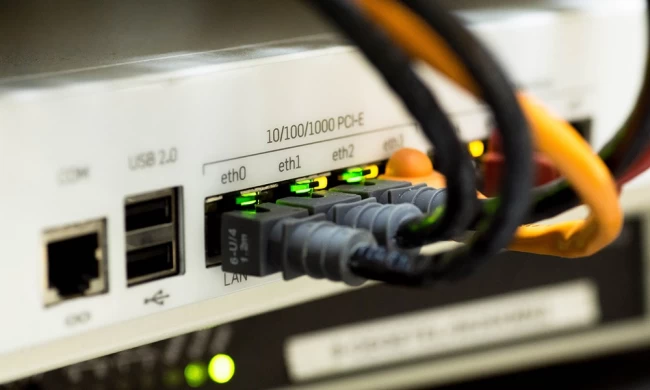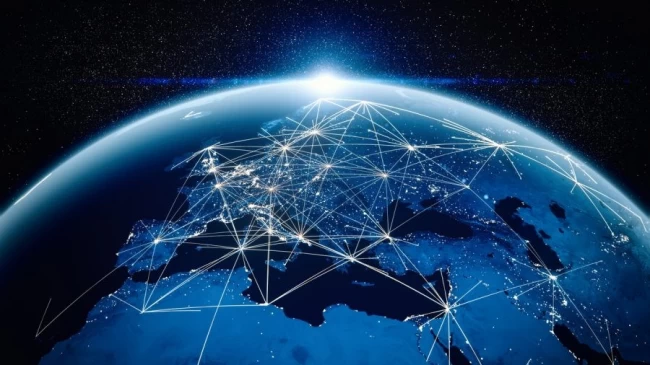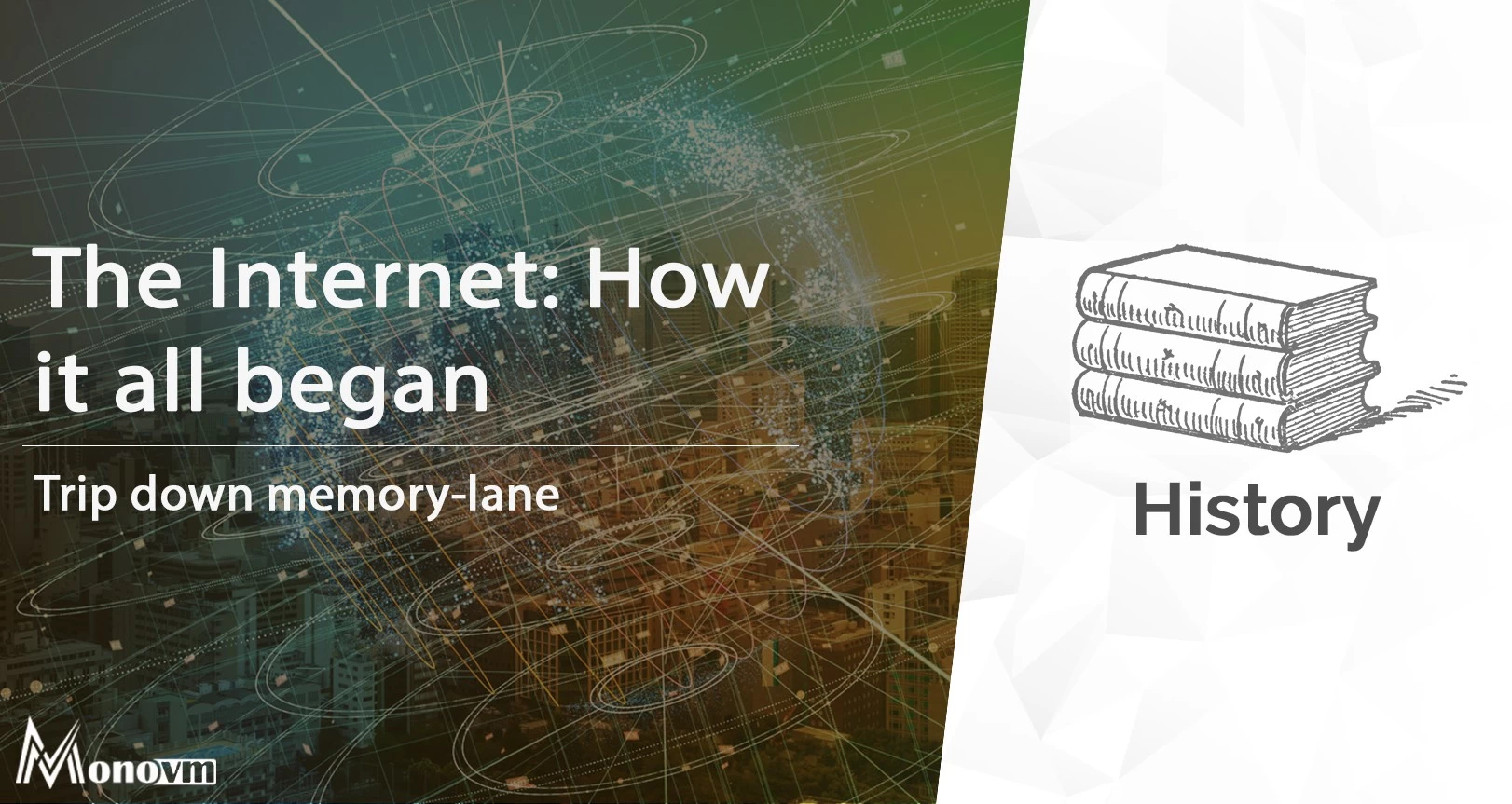List of content you will read in this article:
The invention of the internet was a revolution in information technology and the globalized economy partially because the internet defines our lifestyle now. The internet represents a massive example of the sustainable development of information technology and telecommunication. However, many of us are unaware of the journey of internet development. So let's discuss the unknown history of internet along with the idea for its invention.
What is the internet? [Definition]
First thing first, it is important to make clear what the meaning of the internet is? There are so many misconceptions about the internet that it is the web or cloud. We can say that the internet is a wire that connects all the computers worldwide (let one thing need to make a clear computer is anything which is an electronic gadget like our Mobile phone is also a kind of computer). Sometimes it is referred to as a "network of networks" as it can provide powerful capabilities and can be used on the information.
It can make access to digital information through many applications like the world wide web. It supports human civilization also by social media, e-business, emails, news outlets, and audio-video transmission. The internet was introduced in the 1990s [USA]. According to the statistics for 2022, more than 5 billion people worldwide are using the internet.
Origin

Early networks
By the early 1960s, computer manufacturers had begun to use semiconductor technology in commercial products. Time-sharing systems allowed the computer resources to share rapidly with multiple users, repeating the queue of users fastly, which made the computer more dedicated to each user's task despite the existing accessing system simultaneously.
Thus host to host interaction is envisioned. ARPANET first realized the idea and established the first host-to-host network in 1969.
ARPANET [Advanced Research Projects Agency Network]
The advanced research projects agency was the U.S. Department of Defense. No doubt, it was the first general-purpose computer network. Eventually, it became a critical piece of infrastructure for computer science researchers in the United States. In the meantime, mail transfer protocol, and file transfer protocol for long transmission were out.
ARPANET brought New technology of packet switching, which takes chunks of computer data and breaks them into smaller, suitable pieces that can move through any circuit to the Target point where the pieces match. In the 1970s, the commercial packet networks could replace long-distance modem connections with less expensive virtual circuits, but they never supported host-to-host communications. But more networks led to the internet, such as CYCLADES, X.25 AND PUBLIC DATA NETWORK, UUCP AD Usenet, and Merit network.
The Invention of the Internet

By the last discussion, we have pretty much knowledge of why the invasion internet was needed. The internet we know nowadays is emerged through some steps which are given below
1973-1989
The merging of networks:-To unifies different networks BOB KAHN of DARPA enlisted VINTON CERF of Stanford University to work on it. A group named 'network working group' was formed by STEVE CROCKER with VINTON CERF. This group had reformulated the difference between network protocols that were hidden by using standard network protocols, and this same work also strikes the terminology' Catenet.'
The CYCLADES network designers published the protocol called "Transmission control program," which holds the first use of the term "internet" as a short-term "Internetworking". After several years of work, the Standard research institute conducted the first demonstration of a gateway between the Packet Radio Network (PRNET). In 1977 ARPANET, The SRI's packet radio van, and the Atlantic packet satellite network showed three network demonstrations.
Between 1966-1977, YOGEN DALAL proposed a discrete TCP's routing and transmission control function into two separate layers, which led to the splitting of TCP and the I.P. protocol.
From ARPANET to NSFNET
After ARPANET ran the communication utility for several years, in 1983, the Defence communication Agency U.S. military portion of ARPANET was broken off as a discrete network; the NIPRNET in parallel became the public security gateway on the internet along with SIPRNET AND JWICS.
In the 1980s, connections expanded more in the public community. Many other branches of the U.S. Government and NASA, NSF, and DOE became involved in internet research and developed the successor of ARPANET, which led to the development of 'NASA science network,' NSF developed CSNET, and DOE developed ESNet.
Internet Transition
With the need for collaboration, data exchange, and remote computing sources, the TCP/IP technology spread globally, and it started to support the use of existing networks such as 'International packet-switched service X.25 network to move internet traffic.
The intermittent connection used in the sites such as FidoNet went beyond simple mail peering like accessing File transfer protocol via mail. It is called routing technology which was mainly developed for removing the remaining centralized routing. The Exterior Gateway protocol was put back by the Border Gateway Protocol (BGP), which reduced the central architecture that signified ARPANET. In 1994, a router named Classless inter-domain routing was introduced to provide support for address space, decreasing routing tables' size by using route aggregation.
TCP/IP globalized

Between 1984-88, CERN began to produce major internal computer systems, P.C.s, and accelerator control systems externally. In Europe, it became more widespread. Simultaneously, the rise of Internet working in European Australian universities formed various technologies such as X.25 and UUCP net. In May 1992, South Korea made a two-node domestic TCP/IP. In 1990 Singapore developed TECHNET.
The Asia Pacific Network Information Centre (APNIC), headquartered in Australia, manages I.P. address allocation for the continent. APNIC sponsors an active forum known as the Asia-Pacific Regional Internet Conference on Operational Technologies (APRICOT).
South Korea's first Internet system, the System Development Network (SDN), began operation on 15 May 1982. SDN was connected to the rest of the world in August 1983 using UUCP. It was connected to CSNET in December 1984 and formally connected to the U.S. Internet in 1990.
In 1991, the People's Republic of China saw its first TCP/IP college network, Tsinghua University's TUNET. The PRC made its first global Internet connection in 1994, between the Beijing Electro-Spectrometer Collaboration and Stanford University's Linear Accelerator Center. However, China went on to implement its digital divide by implementing a country-wide content filter.
Rise of Web 1.0: global Internet
In the late 1980s, the first Internet service provider companies were PSINet, UUNET, Netcom, portal software, etc.
In 1992 the U.S. Congress passed the 'scientific and advanced technology act' which was a hit to all internet servicing as it allowed NSF to support the access of the education community to computer networking, and it resulted in Interconnecting with commercial networks.
By 1990 ARPANET set a goal to exceed the new network technologies. In the meantime, it caused PSINet, Alternet much other company's Interactions with commercial customers. Metropolitan area exchange, network access points, and those companies were the primary interactions with various networks.
World wide web

Acronymed www is a space of information where URLs identify information, and documents, It is interlinked by HTTP(hypertext links), and the web browser can access it. It is known as the 'web'. It has emerged in the form of a hyperlink.
It is to be noted that the credit for inventing the first web server is given to TIM BERNERS LEE, which is called as world wide web, and it is renamed Nexus later. Other prominent web browsers are Microsoft Edge, opera, firefox, and google chrome.
In-home computers and popular offices, the NCSA Mosaic browser was used. The USA online provided users a connection to the internet using a dial-up internet connection. But in early 2000, the broadband connection took over the dial-up connection.
E-Commerce & Internet
In early 2000, mobile cellular devices offered non-universal access. The data rates were slow, which led to the slow transformation of analog to digital optical disc.Php, javascript technologies modified the technology and simplified the complexity of web development.
E-commerce, emails in various fields, and the internet was widely used, like Amazon, for example. In 2001 speculative investment bubbles related to taking place in "dot-com" companies. However, this quickly recovered to the new version of web 2.0
Web 2.0
The year 2004-2009 was the revolutionary year for the internet and the spreading of social media. The acceleration which was noticed in between these years are:
- The advent of web 2.0 in 2004
- Adoption of hardware in-house.
- Improvements in hard drives, megabytes to gigabits transform, slower floppy disc
- High-speed internet, data connection, reliable traffic
- New means of communication such as Twitter, Facebook, google encyclopedia, and Wikipedia.
- Non-volatile ram, solid-state devices
- Efficient processor, ARM architecture
Web 2.0 contains user-generated content, usability, and interoperability. It focuses on progressive changes in web pages in which sites interact with each other like social media creators and any virtual community. It includes video sharing, web applications, wikis, blogs, etc.
Mobiles are also renewed with prominent features suitable for web 2.0. Mobiles targeted the websites to make widespread 4g connection, ideal for WiFi and Mobile chips capable of lower power usages.
An internet developer created the App Store, and this whole setup makes our Life globally dependent. The ability to access the internet from Mobile was going to change media consumption, and nowadays, over half of the media consumers are 18-34 aged people.
The First internet link to low earth orbit was founded on 22 January 2010; then, an astronaut named T. J CREAMER posted his Twitter from ISS by making the extended version of the internet into remarkable space. This personal web access LAN uses the space station's high-speed Ku band microwave link. To make surf, astronauts can use a laptop based on the space station to control a desktop system on the earth's surface, and they were able to talk with their families by using voice-over I.P. types of equipment on earth.
The communication with spacecraft has been over point-to-point links through the deep sea network with led fiber. Each data scheduling is done manually. NASA and Google worked in late 1990 on the delay-tolerant network (DTN) named the new network protocol, allowing transfer networks in space-born transmission nodes. Also, spacecraft can lose connection temporarily because they will move behind moons and planets, or the turbulence and unknown weather can be the cause of the disruption.
Under this condition, DTN makes sure to retransmit the data package by dropping them as TCP/IP does. Nasa performed the first field test, known as "deep-sea internet," in 2008. Testing DTN-based communications between the International Space Station and Earth (now termed Disruption-Tolerant Networking) has been ongoing since March 2009 and is scheduled to continue until March 2014.[162]
The same network technology enables missions that include multiple spacecraft where inter-vessel communication might take place to precedent over the vessel-to-earth downlinks. According to Vint Cerf's statement, the 'bundle protocol' uploaded to NASA's Epoxi mission spacecraft and communication with the earth's surface has been experimented with at a distance of approximation of 80 light seconds.
Internet Governance
The meaning of internet governance remains in the very mentioned title, so it is the development of sharing the ethics, norms, decision-making process, and the sustainable program to shape the use of the internet in the public domain. It should not be confused with e-governance which is a different thing.
The internet engineering task force is the most significant ad hoc group that gives technical directions to the internet architecture board, and internet engineering steering group.
The internet society is an internationally made non-profit organization founded in 1992 that assures an open development, and the evolution of the internet for people's benefit.
It provides financial support and promotes understanding of the internet model of the open market and internet security.

The U.S. Department of the commerce-the controller of some aspects of the internet got criticism from those who felt that the control should be more globalized.
The Department of Commerce's hands-off philosophy helped limit this criticism, but this was undermined in 2005 when the Bush administration intervened to help kill the .xxx top-level domain proposal and, much more severely, following the 2013 disclosures of mass surveillance by the U.S. government.
A new U.S. non-profit controversy increased surprisingly exactly when the IANA functions were handed over to ICANN. ICANN's decision-making received criticism from some secretive observers. When the directors' post led to speculation that the large community of internet users was abolished because it was now losing the aspect of being a neutral governing body. On 1 October 2015, following a community-led process spanning months, the IANA functions' stewardship was transitioned to the global Internet community.
Other controversial topics included the creation and control of generic top-level domains (.com, .org, and possibly new ones, such as .biz or .xxx). And the control of country-code domains, recent proposals to put a significant increase in ICANN's budget and take responsibility, and provide a domain tax to pay for the rise.
There were some suggestions to take more control from individual governments or the telecommunication union. And united nations should intervene in internet governance.
Various Uses of the Internet
Internet culture is a kind of culture that narrates the many significant points of using networks for communication, entertainment, business, and recreation purposes. Some features include online communities, gaming, social media, and more, as well as topics related to identifying and providing privacy.
Due to the internet's large-scale consumers, the impacts of internet culture on society and non-digital cultures have spread widely. Additionally, because of the all captivated nature of the internet and culture of the internet, different facts of internet culture are studied individually, not holistically, such as social media, gaming, and specific community.
For further reading, we highly recommend having a read of the top 10 new technology trends for 2022.
The Politicization of the Internet
Due to its eminence and immediacy of mass communication, the internet has also become more politicised as it has grown, in turn, which has led, to discourses activities that would once have taken place in other ways, moving to be mediated by the internet.
Examples include political activities such as public protest and votes, but also the spreading of ideas. Political touches on the internet and widely sharing of disturbing information might become more sensitive, which makes the emergence of terrorism and criminal activities as well politically motivated fake news.
Conclusion
The internet makes our Life more entertaining and sustainable, but we have to prevent it from misuse because every invention of science has merit and demerits. We have to make sure that we will stand against the misuse of the internet like cybercrime, child pornography, other improper use of the internet includes- cyberbullying, cybercrime, cybersex trafficking, malware, spamming, vandalism. We hope this information about History of internet will help you with all the basic guides and needs of Internet.

I'm fascinated by the IT world and how the 1's and 0's work. While I venture into the world of Technology, I try to share what I know in the simplest way with you. Not a fan of coffee, a travel addict, and a self-accredited 'master chef'.